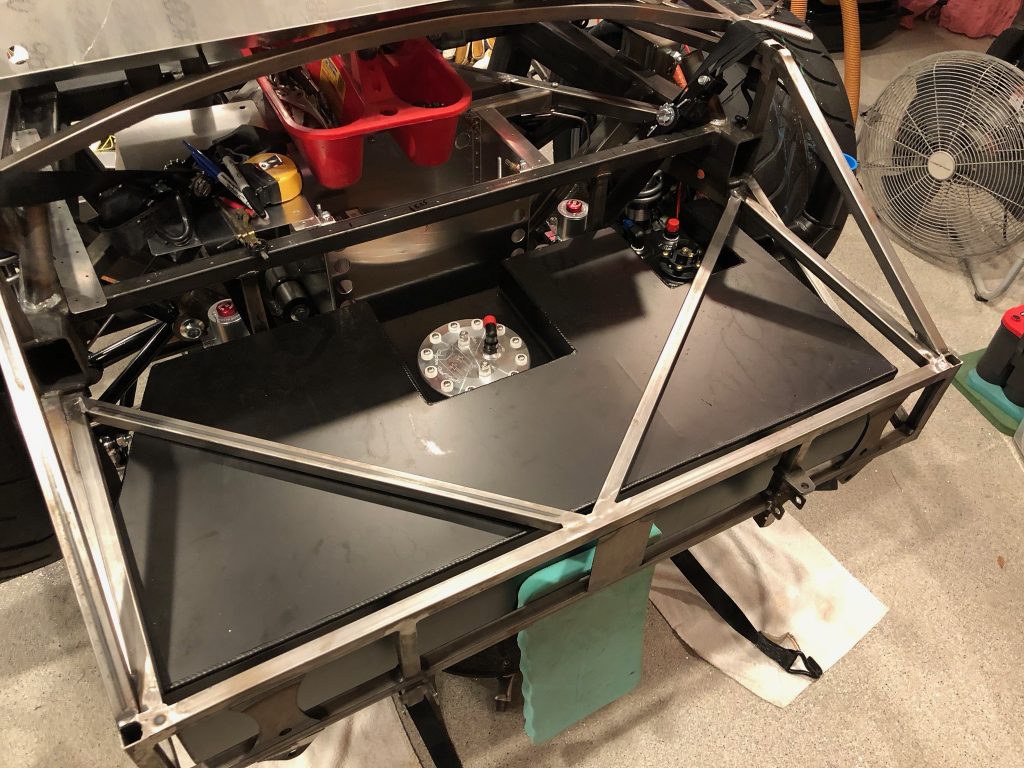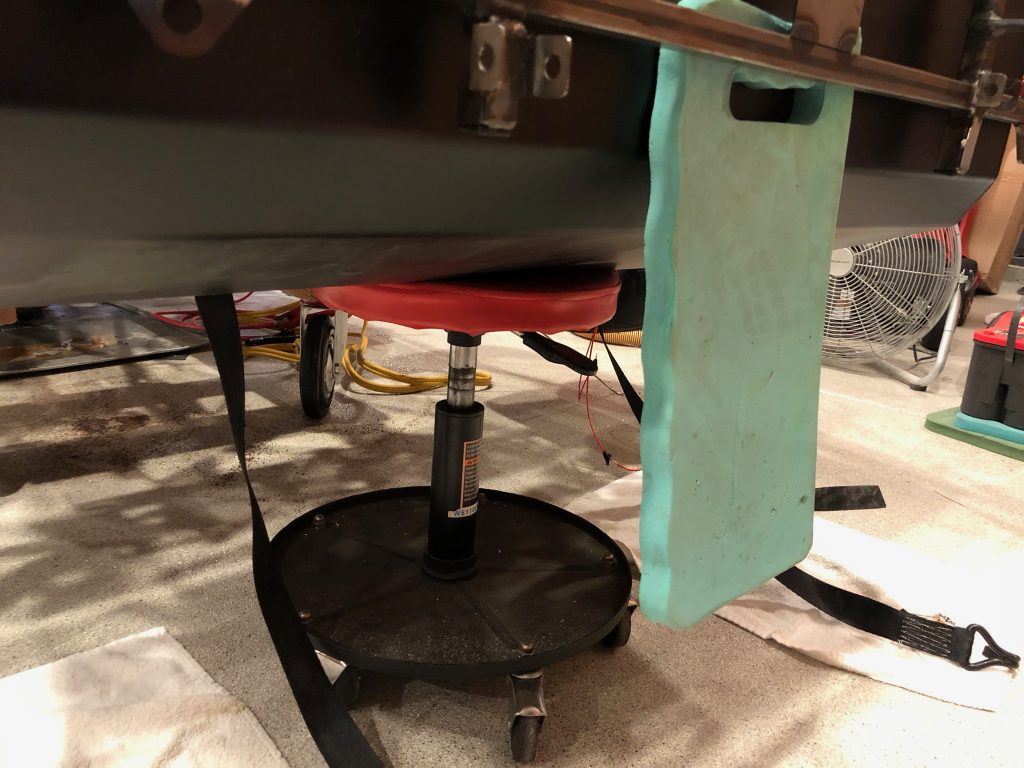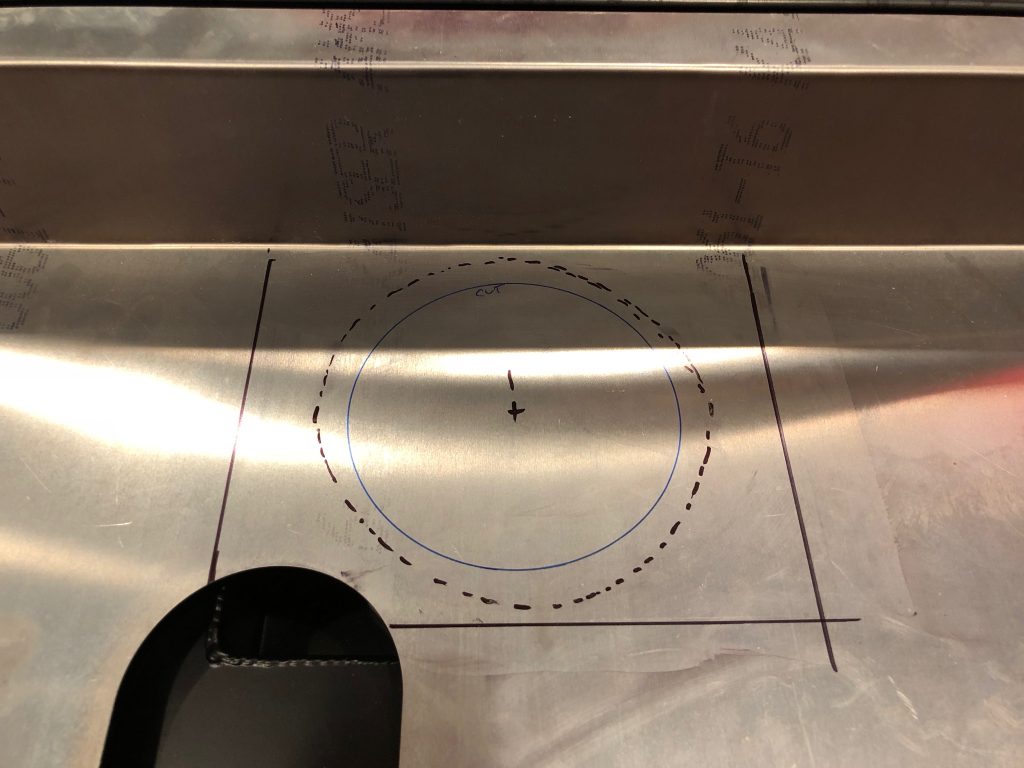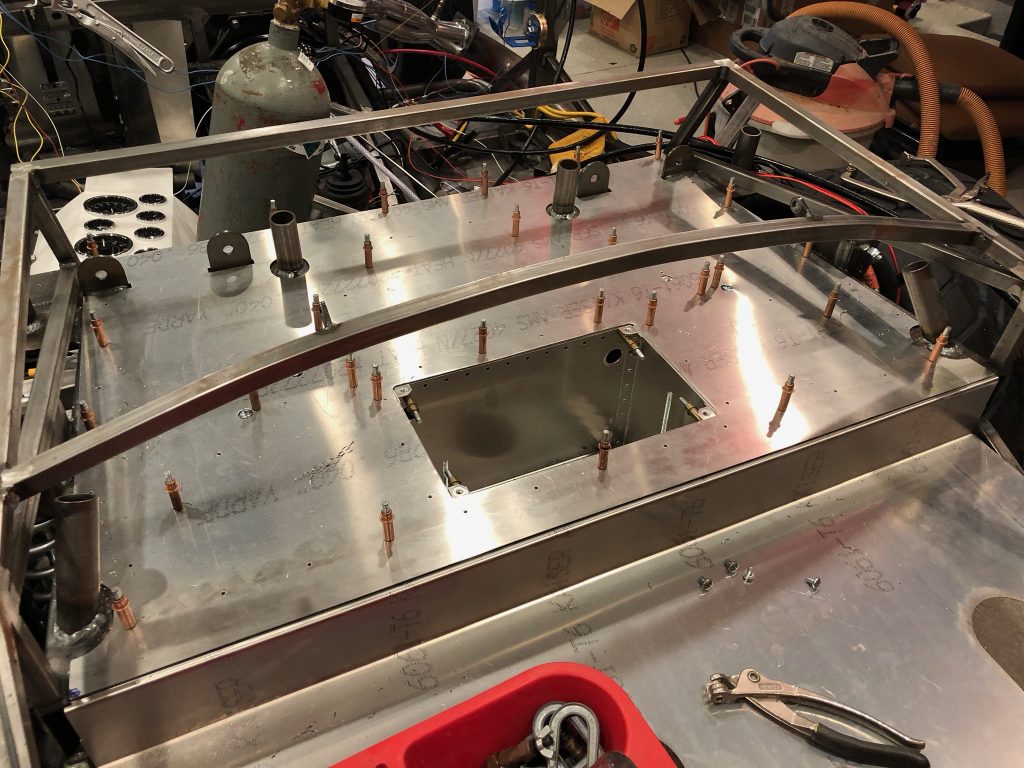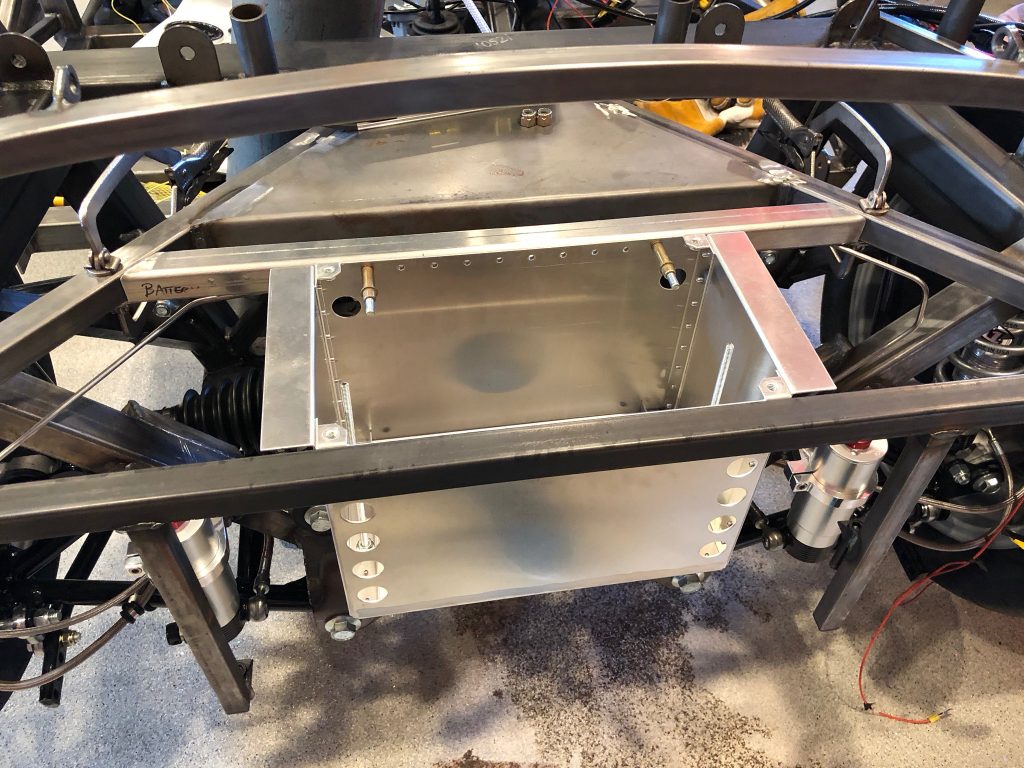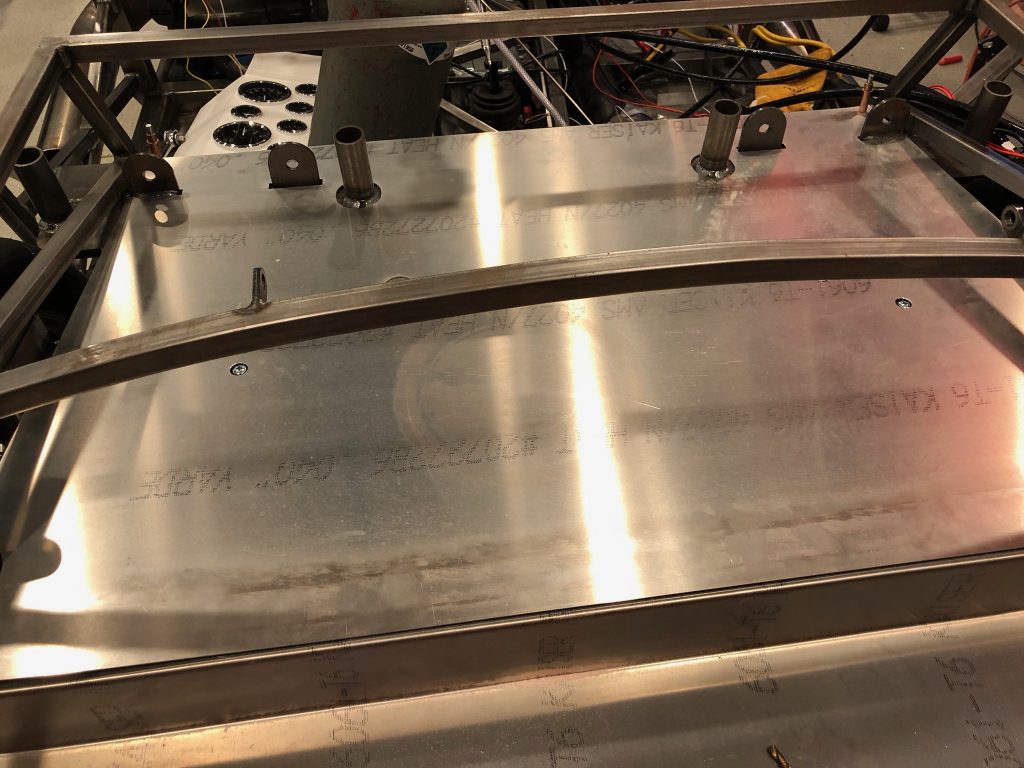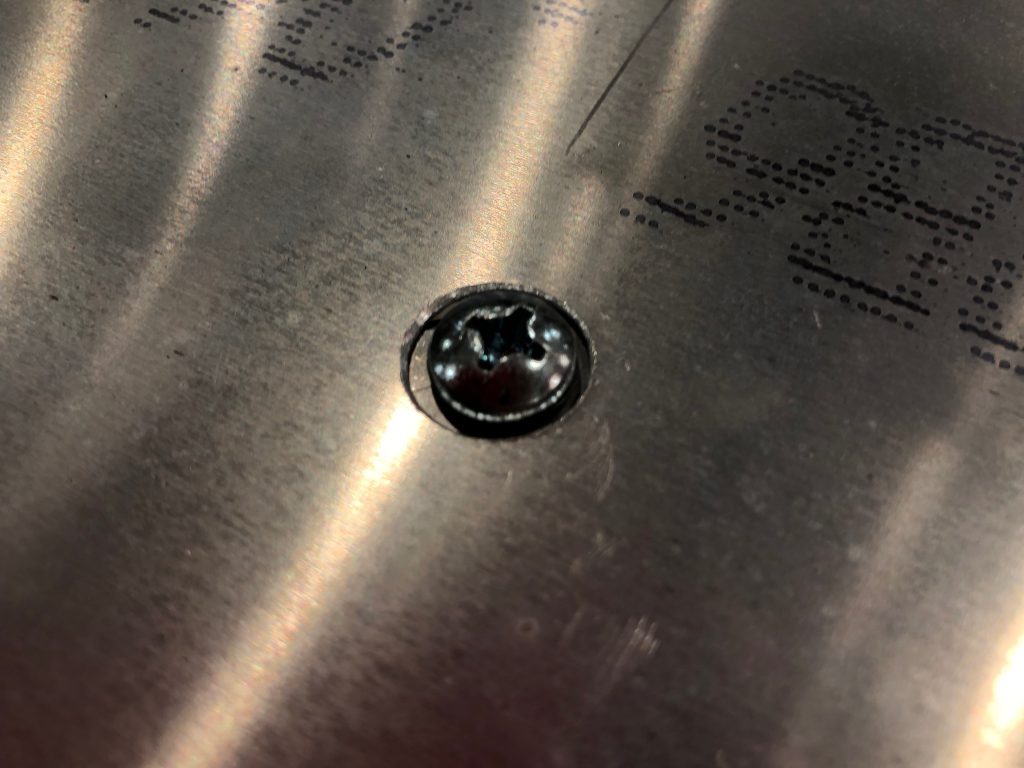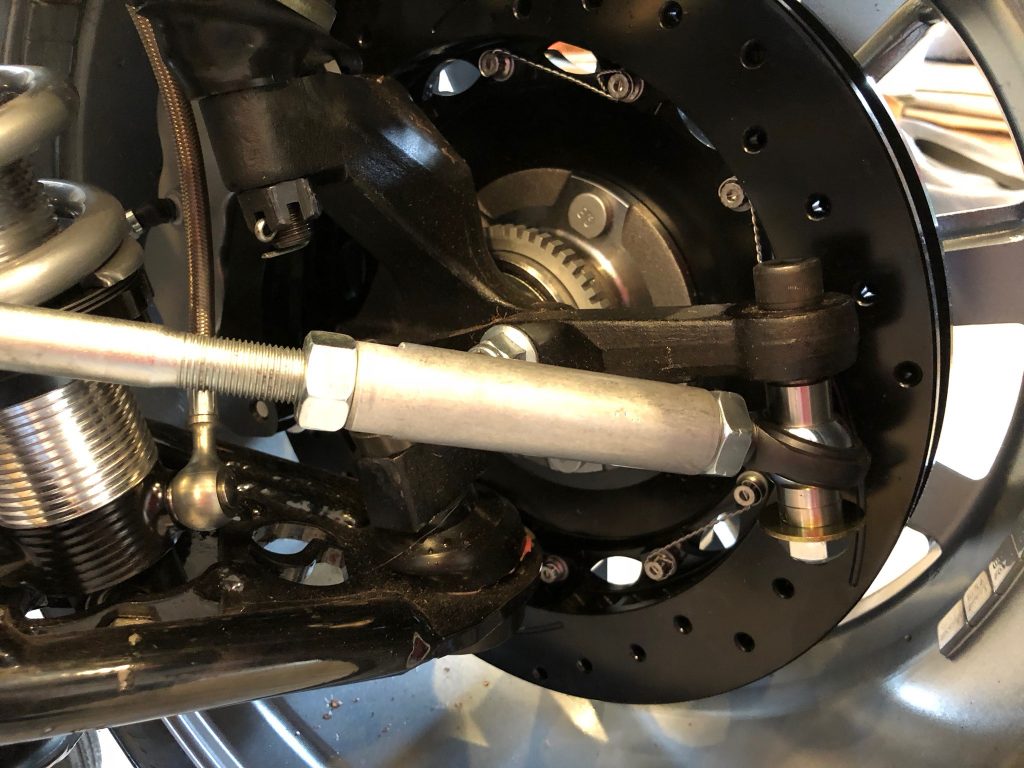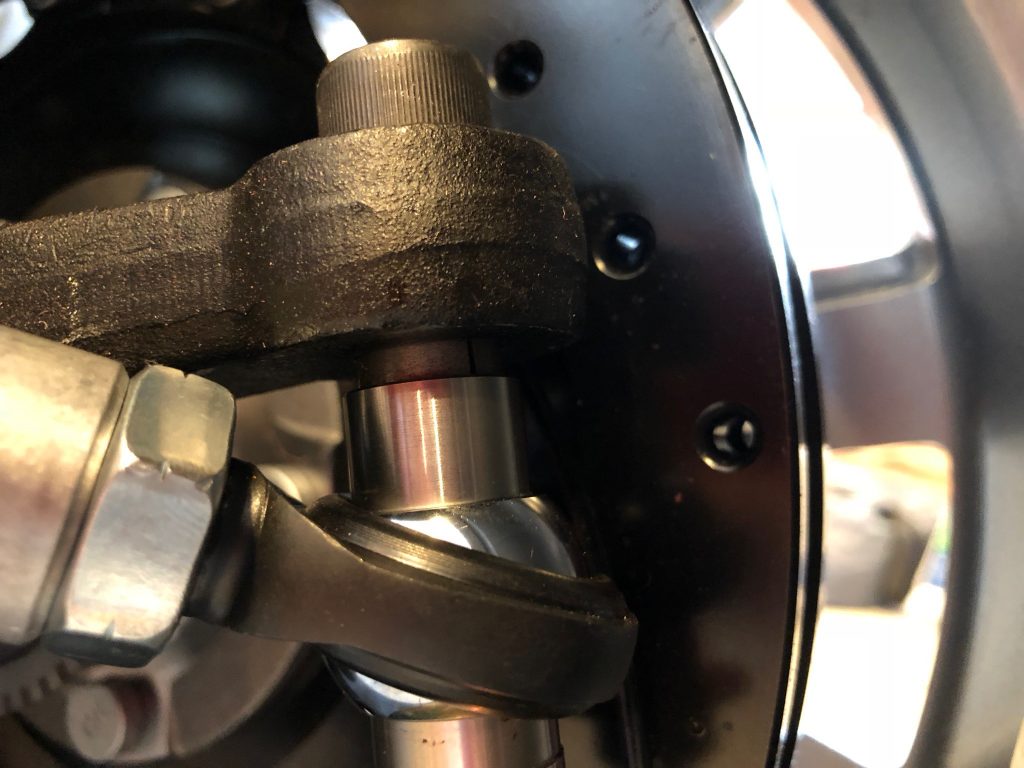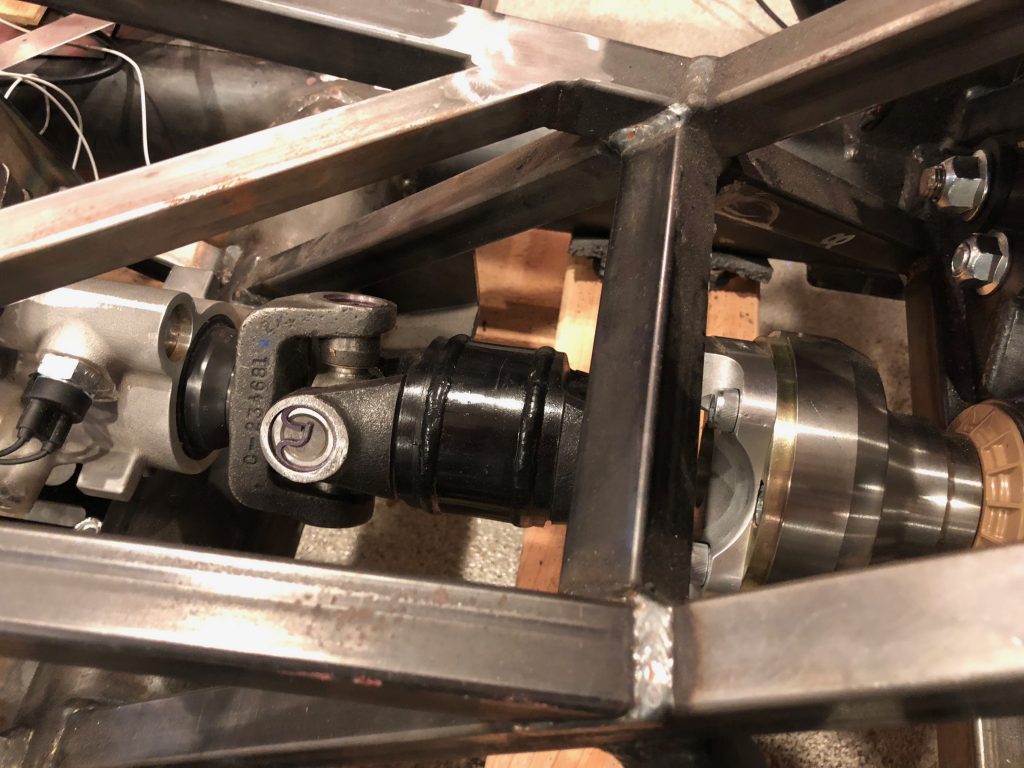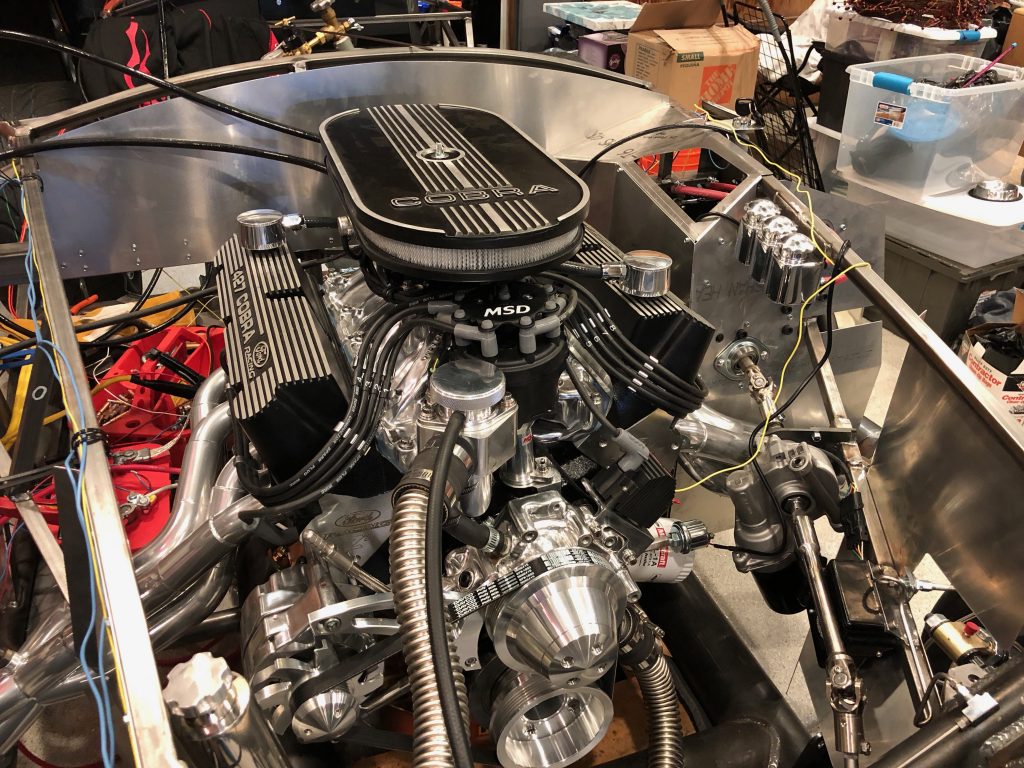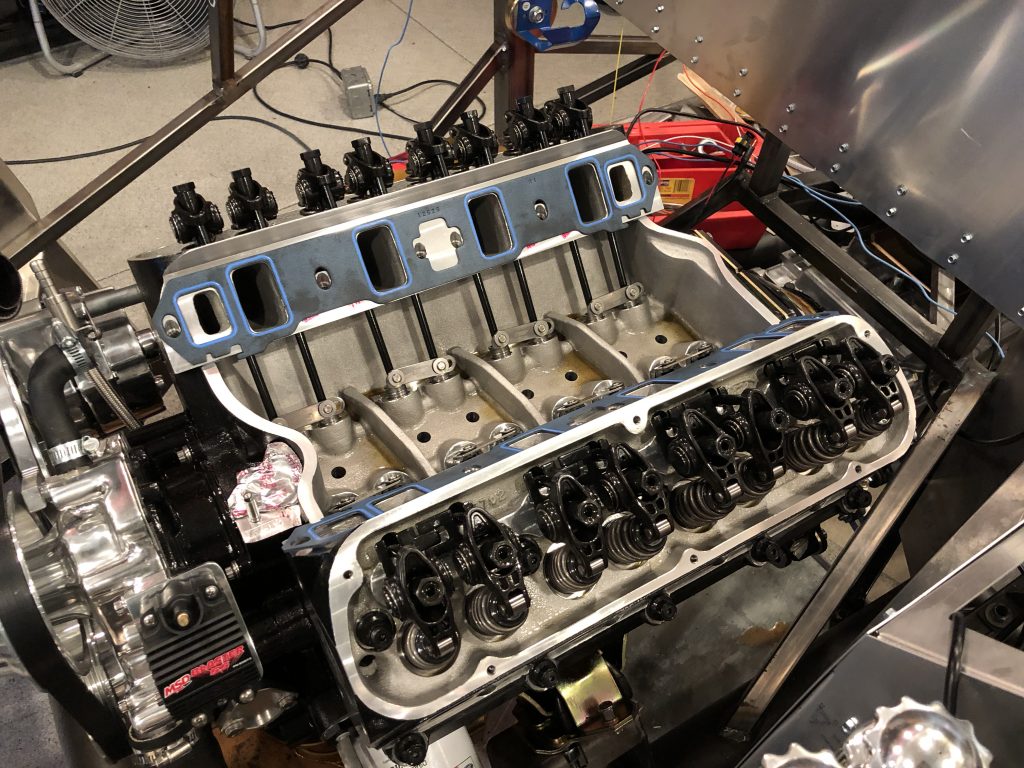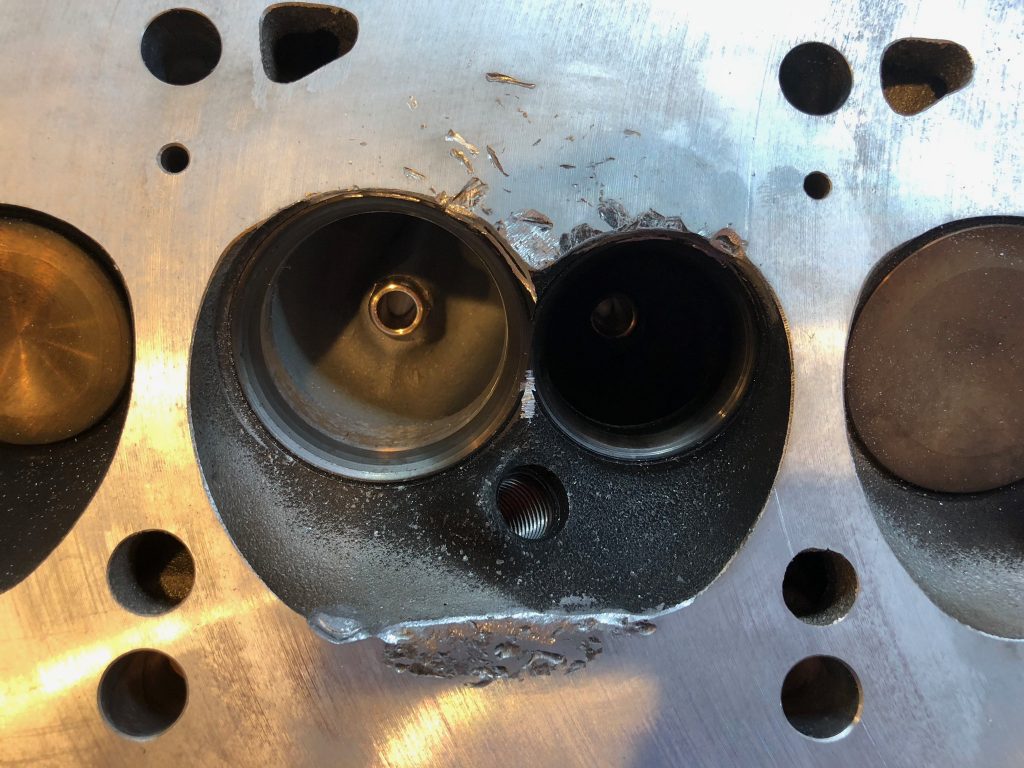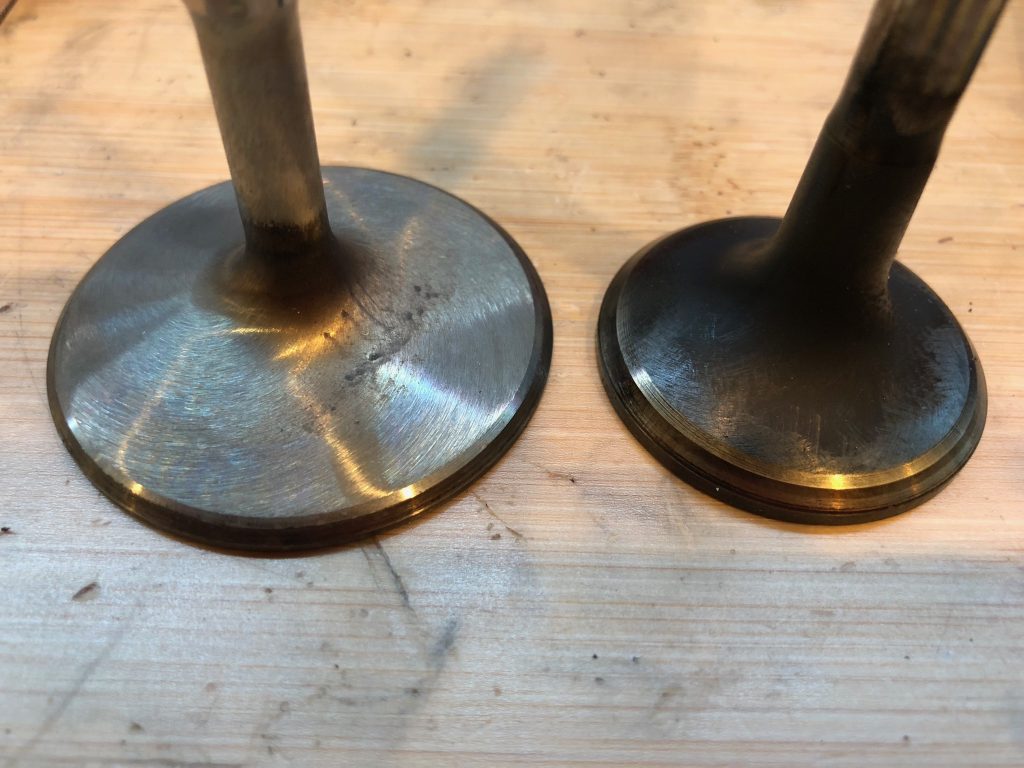I test fit the fuel tank because I need to cut new access panels in the lower trunk floor. The fuel sender sticks above the top of the tank, so I needed to shift the tank most of the way forward and slightly left of center in order for the sender to clear the right diagonal square tubing.
I temporarily supported the tank with my pneumatic stool and removed the straps so that I could install the lower trunk floor.
With the floor installed, I marked the location of the new access panel for the fuel pump. I’ll probably make this slightly bigger so that I can remove the fuel pump through the hole if that ever becomes necessary.
I also laid out the hole for the access panel that covers the fuel level sender, fuel return and vent fittings. This access panel will wrap up the vertical portion of the lower trunk floor since the plumbing fittings are forward of this surface and would be difficult to access only through the lower portion of the hole.
Since I don’t need these access holes, I made sure the rivets wouldn’t interfere with the 3/4″ square tubing below and then drilled and riveted these plates in place.

